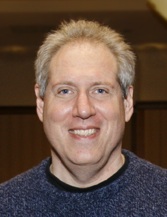By August Berkshire
 A personal long-term goal has been to persuade enough members of each group that Minnesota Atheists should merge with the Humanists of Minnesota.
A personal long-term goal has been to persuade enough members of each group that Minnesota Atheists should merge with the Humanists of Minnesota.
The roots of our groups started independently, and with no knowledge of each other, in the mid-1980s. Back then it made more sense to have two groups. Atheists (inspired by Madalyn Murray O’Hair) were viewed as quite militant. There was also the false equivalency of atheism with communism and being unAmerican. Consequently, many humanists were afraid of publicly using the word “atheist.” Moreover, humanists wanted a group that represented more than what they were against (belief in the supernatural).
.For their part, atheists viewed humanists as not having the courage of their convictions to come out of the closet as atheists – something that was much more difficult for many people then than it is now.
Today, as both movements have grown and matured, we find the differences between atheist and humanist groups to be dwindling. Atheists realize that discrediting arguments for the supernatural is just the first step. We are engaging in charities, family activities, and social causes beyond state/church separation.
Humanists are finding that the root cause or enabler of many social problems is religion, and that it is not enough to merely criticize the extremists – we must strike at the very root. Any supernatural belief lays the groundwork for all supernatural beliefs. Moreover, “atheist” has become a much more accepted word in society, especially among young people. The American Humanist Association has, within the past five years, embraced the word “atheist,” calling it the elephant in the room that cannot be ignored.
If you compare the attendees of typical meetings of Minnesota Atheists and the Humanists of Minnesota, you will find that the former tend to have a younger average age. Yet both groups prosper and many people, such as my partner Rachel and I, are members of both groups. I even served on the Humanists of Minnesota board of directors for a couple years and received a prestigious award from them. I never met a single member who wasn’t a compassionate atheist.
The advantage of a merger is obvious: economies of scale for like-minded groups. We would only need one board of directors, one newsletter, one website, one TV show, one Meetup group, and, ultimately, one building.
Our “Atheists Talk” radio show demonstrates that atheist and humanist ideas can happily coexist without any conflict at all. At our shared summer picnics and winter solstice parties, members of both our organizations get along as if we were already one big group.
The new group could be called Minnesota Atheists and Secular Humanists (MASH). Or, if the Minnesota Skeptics would like to join us: Minnesota Atheists, Skeptics, and Humanists (MASH), which would parallel the group at the University of Minnesota in the Twin Cities: Campus Atheists, Skeptics, and Humanists (CASH).
In order to make sure that this idea had sufficient support, I would suggest that it pass by a supermajority of each group’s membership – say 75%.
In my almost 30 years of atheist activism, it seems to me that virtually every schism, split, or separation in the freethought movement was based on personalities, ego, desire for power, or quibbles about a name – not on atheist/humanist philosophy. Can we rise above our differences for the greater good of coming together under the banner of a unified atheist and secular humanist organization? Should we? Or are there rational obstacles that are just too great to overcome?

